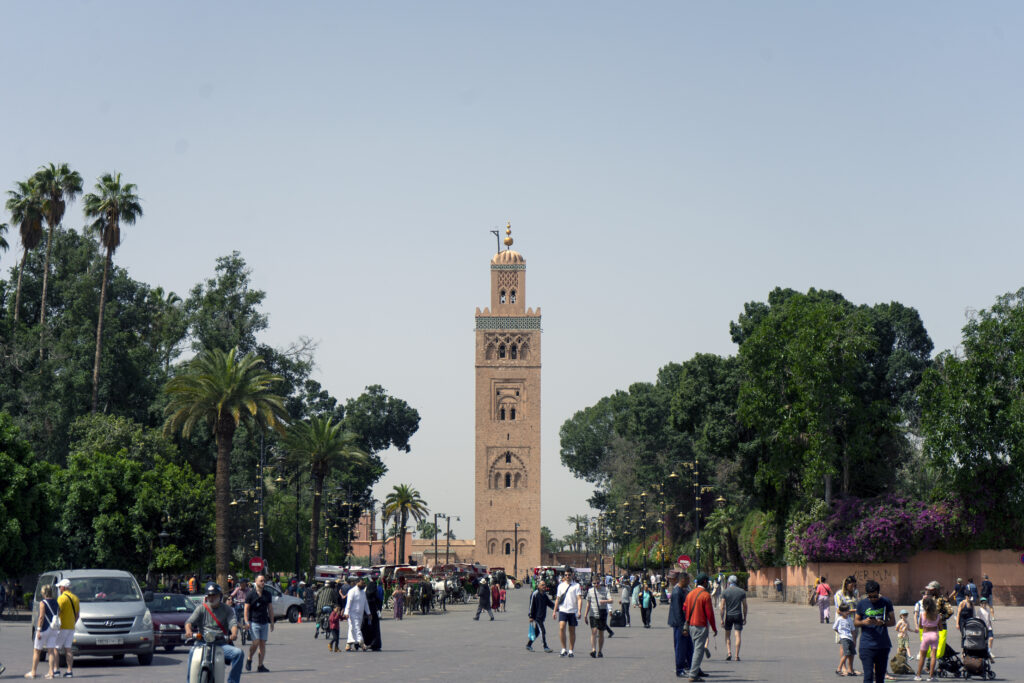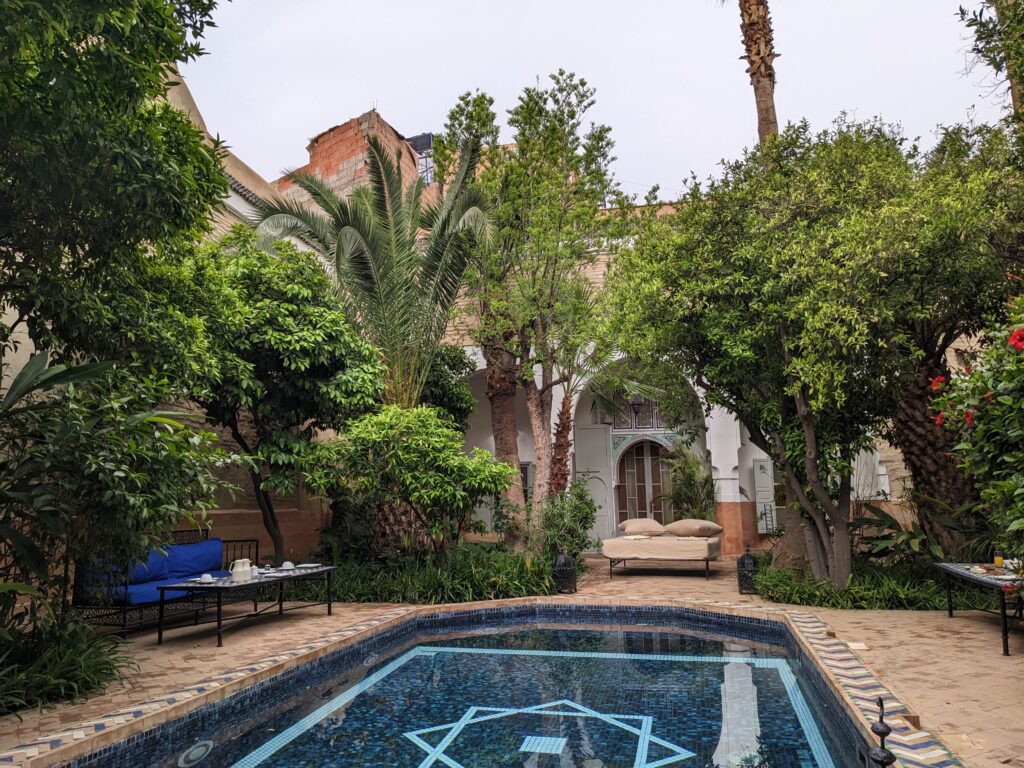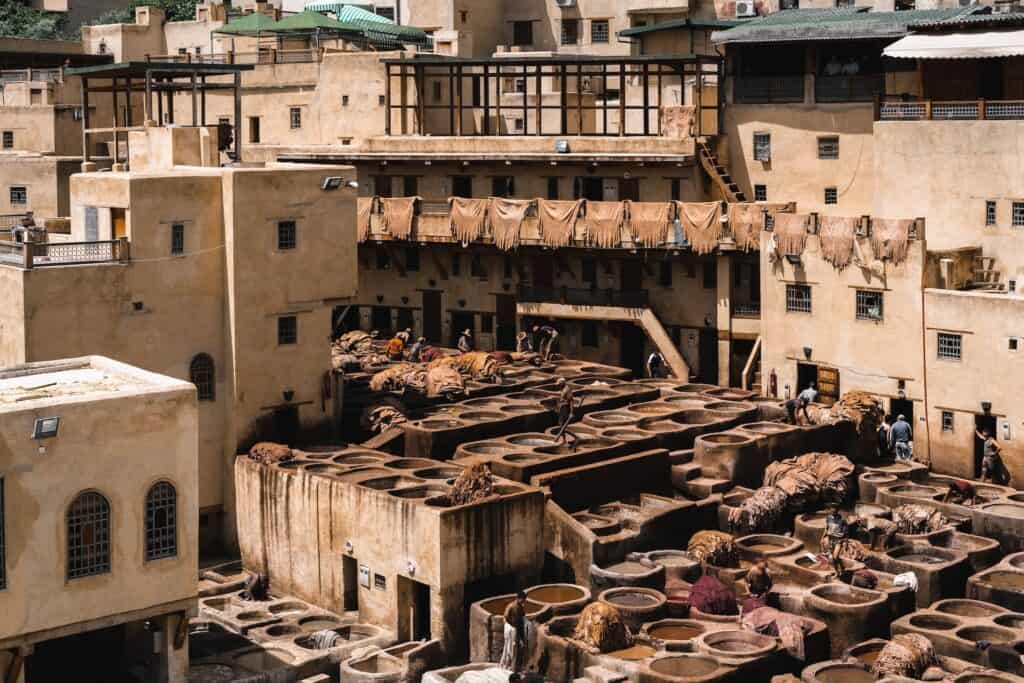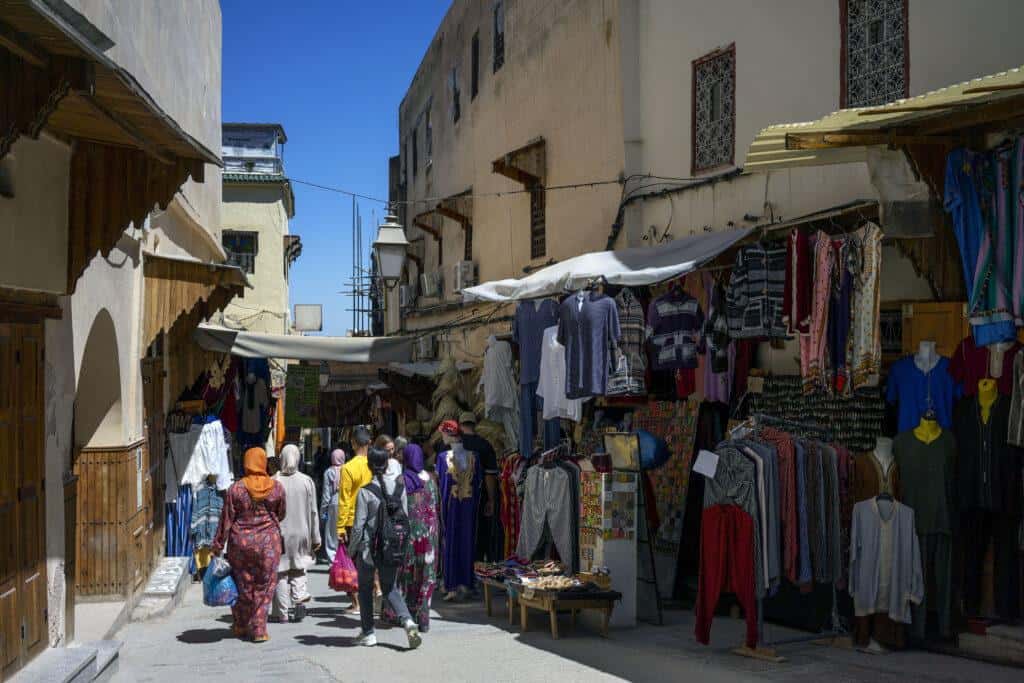Last Updated on June 19, 2024
Wondering if you should visit Morocco in winter? Here are 10 reasons why winter is the perfect time to travel to this country in North Africa.
Traveling Morocco in winter means you’ll encounter less crowds, have an easier time booking tours, accommodations, and restaurants, and you’ll be able to have more of a positive impact on Morocco’s tourism industry.
During winter, Morocco continues to have plenty of sunny days, and the temperatures are mild. While it might be too cold to swim on Morocco’s coasts, you’ll enjoy less crowds in popular tourist hubs like Marrakech.
Read on to learn details about what winter in Morocco is like, and 10 reasons why you should visit Morocco in winter.
Disclosure: This article includes affiliate links. This means that if you make a purchase through one of those links, I earn a small commission. Affiliate links cost you nothing to use, and keep Pina Travels reader-supported. Thank you!
- Winter in Morocco: The Basics
- 10 Reasons Why You Should Visit Morocco In Winter
- 1. There are less tourists and crowds.
- 2. More accommodation availability.
- 3. Morocco in winter is slightly cheaper.
- 4. Off-peak means fewer lineups for attractions.
- 5. The weather is pleasant during Morocco’s winter.
- 6. Winter in Morocco is the best time for surfing.
- 7. Visiting Morocco in winter benefits tourism and communities.
- 8. Attend the Almond Blossom Festival
- 9. Celebrate Berber New Year
- 10. Go Skiing in the High Atlas Mountains
- Winter in Morocco is the Time to Go

Winter in Morocco: The Basics
Thinking of visiting Morocco in winter? Here are some key things to know.
Is it worth going to Morocco in the winter?
Yes, it’s worth going to Morocco in winter. Morocco has a mild climate during the winter months, and you’ll still enjoy plenty of blue skies and sunny days. During winter, you can enjoy Morocco’s historic cities, beautiful beaches, and towns without the crowds, and without the summer heat.
When is winter in Morocco?
Winter in Morocco begins in December and ends in March. During these months, it will get cold enough for there to be some snow in the mountains. Throughout the rest of Morocco, temperatures are moderate during winter, ranging between 7°C (45°F) and 20°C (68°F).
Which month is coldest in Morocco?
January is the coldest month in Morocco. Although Morocco is the chilliest month of the year, the winters are mild and can be very sunny. There’s lots of benefits to visiting Morocco during January, like less crowds, fewer line-ups, and increased availability for accommodations and tours.

10 Reasons Why You Should Visit Morocco In Winter
During winter in Morocco the sun shines and there’s far less crowds. Let’s dive into 10 specific reasons why you travel to Morocco in winter.
1. There are less tourists and crowds.
There are both pros and cons of tourism. Although there are great benefits of tourism, when there’s too much of it, it can lead to problems caused by overtourism. Overtourism creates issues for people local to a community, but it can also impact the experiences of tourists.
When there are so many people visiting a city, a site, a beach, or another location, it becomes harder to take in the moment. Crowds make it more difficult to see the site you’re visiting, and it can also mean longer wait times and lines to get into attractions.
It’s important to be cognizant of overtourism – for the sake of the community you visit, as well as your experience there.
For example, during high season, Marrakech is incredibly busy with crowds and lineups. But in the winter, it’s much quieter. Given this, you’ll enjoy experiencing this historic Moroccan city more during the cooler months.
One of the best ways to avoid mass tourism when traveling is to visit destinations in their shoulder season or off-season. Morocco in winter is the off-season, making it the best time to travel there with minimal crowds. By traveling at this time, you can be a more responsible tourist!
2. More accommodation availability.
Less tourists in Morocco means more availability and more choice when it comes to choosing your lodging. Morocco in winter tends to have way more hotel, bnb, and short-term rental availability.
In the off-peak season, you’ll find not only that there is more availability, but it is slightly less expensive, and can be booked more last-minute. You’re able to travel with more flexibility because your accommodations don’t necessarily have to be booked far in advance.

3. Morocco in winter is slightly cheaper.
Since winter in Morocco is the low season for tourism, there’s lower demand for accommodations, tours, restaurants, and other tourism related things.
As a result, prices for tourism-related things drop a bit during these months. You’ll find that the rates for booking your hotels will be of better value, and the prices for tours will be slightly lower during the winter.
Booking in advance will also contribute an extra discount, so it’s well worth planning your travel a few months ahead.
Depending on where you are flying to Morocco from, you’ll find that airlines drop prices for flights to Morocco in winter. Because there is less demand for these flights, the prices are more accessible.
When you combine all the costs for a winter trip to Morocco versus a summer trip, an off-season trip will amount to significantly less.
4. Off-peak means fewer lineups for attractions.
Peak season in Morocco is busy, especially in the popular cities like Marrakech and Fes. This often means lineups for everything from museums, to historical sites, and restaurants.
Visiting Morocco in winter is the best way to avoid waiting in line to see the popular sites, like Bahia Palace and Jardin Majorelle in Marrakech. You’ll also have an easier time getting into popular restaurants in Marrakech, like Nomad Marrakech.

5. The weather is pleasant during Morocco’s winter.
Despite it technically being winter in Morocco, the winter months stay pretty mild if you aren’t visiting the mountainous regions. The temperatures range between 7°C (45°F) and 20°C (68°F).
It does fall below zero degrees (and it snows!) in some of the mountainous regions of Morocco, but at lower altitudes, you won’t see any snow at all.
In the summer, Morocco becomes very hot, and so the winter months mean you’re able to enjoy Morocco’s outdoors comfortably because of this mild weather. You won’t need to worry about overheating.
6. Winter in Morocco is the best time for surfing.
Did you know that Morocco is a surfing destination? Morocco in winter becomes a surfing hot spot at beaches all along its coasts.
Surf season for Morocco is best in September through to March. This is because during these months, there is consistent swell, relatively warm water, and moderate air temperatures.
The winter storms in the North Atlantic spin northwest swell, sending it down to the points and reef breaks in Morocco.
While it’s fun to watch surfers on the huge waves in Morocco’s surfing hotspots like Imsouane, it’s also fun to take a surf lesson!
In Essaouira, a small city on the coast, you can take a beginner surf lesson. Lessons include a surfing instructor, wet suit, and all the equipment you need.
7. Visiting Morocco in winter benefits tourism and communities.
During the off-peak season in any tourist destination, locals working in tourism earn less income. This is the case in Morocco, which sees a big surge in tourism during the spring and fall months, but a drop-off during the winter months.
When you visit Morocco in the off-peak season, you’re able to spend your tourist dollars at a time of year when they’re more needed. This benefits the local Moroccan communities that you travel to, from the restaurants you eat in, to the hotels you book, and the tour guides you hire.
For example, off-season is a great time to go to the town of Bhalil, Morocco where you can stay in a homestay and learn about local life.

8. Attend the Almond Blossom Festival
The Almond Blossom Festival is a unique festival held usually in the second week of February. This is when the almond trees are at their blossoming peak.
The best place to see the blossoming almond trees is in the Almond Valley in Toundoute, the village of Tafraoute, and other surrounding sites. The hills and ruins in this region come alive with pink-white almond blossoms.
During the festival, you can see and experience traditional dance, Berber folklore, blossoming trees, and of course delicious food. The Almond Blossom Festival is the perfect time to taste some of Morocco’s most popular almond-based dishes.
9. Celebrate Berber New Year
If you visit Morocco in January, be sure to go around January 12th for Amazigh New Year, also known as Yennayer.
This day marks the first day of the Berber (or Amazigh) agricultural year. It corresponds to the first day of January in the Julian Calendar instead of the Gregorian calendar which is what most of us are familiar with.
Berber people in Morocco, Libya, Tunisia, and parts of Egypt all celebrate Yennayer. The Algerian government recognizes it as a national holiday, and it was declared an official holiday in Morocco in 2023.
To experience the biggest celebrations, head to the Amazigh regions of southeast Morocco for January 12th and 13th. Berber towns and villages around Essaouira and Agadir celebrate this holiday with collective dinners and street parties to celebrate their national holiday.
There’s lots of traditional foods like chicken and couscous, live music, and parades. Being in Morocco during this national holiday is a great opportunity to learn about Berber culture and customs.

10. Go Skiing in the High Atlas Mountains
Morocco in winter means enough snow for skiing in some regions of the country! The ski season can last from December through to March, but the safest bet for good ski conditions in Morocco is to go in January.
Morocco has a couple ski resorts, but the most well-known one is Oukaïmeden, which is the biggest ski resort in Morocco. Oukaïmeden is in the Atlas mountains near the Toubkal mountain, the highest peak in Morocco.
The resort is about 80 kilometers (50 miles) from Marrakech, making it easily accessible from the city. You can both ski and snowboard at Oukaïmeden. There are 10 km of slopes, and 7 chairlifts to take you to the top of the runs.
Winter in Morocco is the Time to Go
Visiting Morocco in winter will give you the freedom to avoid crowds and lines, travel with flexibility, and experience some of Morocco’s winter holidays like the Almond Blossom Festival and Berber New Year.
Ready to plan your visit to Morocco in winter? Here’s more from Pina Travels:
- How to Train From Casablanca to Marrakech
- 3 Best Sahara Desert Tours From Marrakech (+ What to Expect)
- Fes or Marrakech: Which Moroccan City Should You Visit?
- How to Train From Fes to Marrakech
Erin has been traveling for over a decade, both solo, and with her partner. She’s now traveled to countries across 6 continents, and has lived in 2 countries abroad. Erin also hosts the travel podcast, Curious Tourism, where she interviews travel industry thought leaders and experts about responsible tourism. Learn more about Erin, and get in touch with her, here.



